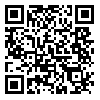Volume 20, Issue 2 (9-2022)
sjsph 2022, 20(2): 111-132 |
Back to browse issues page
Download citation:
BibTeX | RIS | EndNote | Medlars | ProCite | Reference Manager | RefWorks
Send citation to:



BibTeX | RIS | EndNote | Medlars | ProCite | Reference Manager | RefWorks
Send citation to:
Mosadeghrad A M, Abbasi M, Heydari M. Evaluation of Iran's Health Financing System. sjsph 2022; 20 (2) :111-132
URL: http://sjsph.tums.ac.ir/article-1-6134-en.html
URL: http://sjsph.tums.ac.ir/article-1-6134-en.html
1- Ph.D. Professor, Department of Health Management and Economics, School of Public Health, Tehran University of Medical Sciences, Tehran, Iran
2- Ph.D. Student, Department of Health Management and Economics, School of Public Health, Tehran University of Medical Sciences, Tehran, Iran
3- Ph.D. Student, Department of Health Management and Economics, School of Public Health, Tehran University of Medical Sciences, Tehran, Iran ,Mheydari@razi.tums.ac.ir
2- Ph.D. Student, Department of Health Management and Economics, School of Public Health, Tehran University of Medical Sciences, Tehran, Iran
3- Ph.D. Student, Department of Health Management and Economics, School of Public Health, Tehran University of Medical Sciences, Tehran, Iran ,
Abstract: (3031 Views)
Background and Aim: The health financing system is "the process of collecting, pooling and managing financial resources and purchasing healthcare services”. Iran's health financing system is facing challenges. The aim of this study was to evaluate the Iranian health financing system.
Materials and Methods: This descriptive study retrospectively evaluated the health financing system of Iran between 2000 and 2019 using archival data. Data were collected from the World Bank website and analyzed using the Excel software.
Results: Iran's health expenditure per capita increased by 3.7% annually between 2000 and 2019 and reached $868 (purchasing power parity) in 2019. Iran's total health expenditure increased from $32 billion in 2000 to $72 billion (purchasing power parity) in 2019 (5.9% annual increase). Iran accounted for about 0.6% of the world total health expenditure in 2019. In that year about 6.7% of the country's gross domestic product was spent on health, the global average being 9.8%, while the general government health expenditure (% of the then current health expenditure) in Iran and the world were 49.5% and 59.8%, respectively. Out-of-pocket expenditure (% of the then current health expenditure) decreased in the last decade in Iran, reaching 39.5% in 2019, compared to 18% worldwide.
Conclusion: Iran’s health system costs are increasing at a faster rate than the growth of its Gross Domestic Product (GDP). The country’s health expenditure (% of GDP) and, as a result, the general government health expenditure (% of general government expenditures) has decreased and out-of-pocket expenditure (% of current health expenditures) has increased. Therefore, reforms should be implemented to strengthen the country's health financing system.
Materials and Methods: This descriptive study retrospectively evaluated the health financing system of Iran between 2000 and 2019 using archival data. Data were collected from the World Bank website and analyzed using the Excel software.
Results: Iran's health expenditure per capita increased by 3.7% annually between 2000 and 2019 and reached $868 (purchasing power parity) in 2019. Iran's total health expenditure increased from $32 billion in 2000 to $72 billion (purchasing power parity) in 2019 (5.9% annual increase). Iran accounted for about 0.6% of the world total health expenditure in 2019. In that year about 6.7% of the country's gross domestic product was spent on health, the global average being 9.8%, while the general government health expenditure (% of the then current health expenditure) in Iran and the world were 49.5% and 59.8%, respectively. Out-of-pocket expenditure (% of the then current health expenditure) decreased in the last decade in Iran, reaching 39.5% in 2019, compared to 18% worldwide.
Conclusion: Iran’s health system costs are increasing at a faster rate than the growth of its Gross Domestic Product (GDP). The country’s health expenditure (% of GDP) and, as a result, the general government health expenditure (% of general government expenditures) has decreased and out-of-pocket expenditure (% of current health expenditures) has increased. Therefore, reforms should be implemented to strengthen the country's health financing system.
Type of Study: Research |
Subject:
Public Health
Received: 2023/01/8 | Accepted: 2022/09/22 | Published: 2022/09/22
Received: 2023/01/8 | Accepted: 2022/09/22 | Published: 2022/09/22
Send email to the article author
| Rights and permissions | |
 |
This work is licensed under a Creative Commons Attribution-NonCommercial 4.0 International License. |





